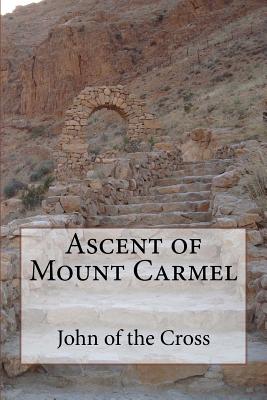
He was also a reformer of the Carmelite Order and is considered, along with Saint Teresa of vila, as a founder of the Discalced Carmelites. Saint John of the Cross was a major figure of the Counter-Reformation, a Spanish mystic, Catholic saint, Carmelite friar and priest. He shows how the Soul sets out to leave all worldly ties and appetites behind to achieve "nothing less than transformation in God". The book is divided into three sections and is presented as a commentary on four poetic stanzas by John on the subject of the Dark Night. Page dealing with Traditional Catholicism built on a foundation of the spirituality of St. In The Ascent Of Mount Carmel St John of the Cross illustrates the Soul's progress to the summit of the metaphorical Mt Carmel where God is encountered.

Along with The Dark Night Of The Soul, The Living Flame of God, and the Spiritual Canticle, The Ascent Of Mount Carmel is regarded as one of the greatest works of mysticism in Christianity. You must possess it without wanting anything.īecause it is the center of its humility.The Ascent Of Mount Carmel is part of four works by John dealing with the "Dark Night of the Soul", when the individual Soul undergoes earthly and spiritual privations in search of union with God. This solution is proved by a passage from Saint Paul. You must go by a way in which you are not.Īnd when you come to the possession of the all Ascent of Mount Carmel / Book 2 by John of the Cross Chapter XXII Chapter XXIII CHAPTER XXII Wherein is solved a difficulty namely, why it is not lawful, under the law of grace, to ask anything of God by supernatural means, as it was under the old law. You must go by a way in which you possess not. You must go by a way in which you know not. To come to the knowledge which you have not You must go by a way in which you enjoy not.

To come to the pleasure which you have not These verses are from his drawing “The Ascent of Mount Carmel,” which contained instructions for climbing to the summit, the high state of union: John of the Cross, the Spanish mystic of the Order of Discalced Carmelites, after having spent many months imprisoned in a small cell in Toledo, in 1578.

First, let me share the illustration–not so easy to read, but worth the effort: John of the Cross–it illustrates so well the post, but is so rich, it is worthy of much reflection in itself. Today, as I reflected again on an earlier post, “Threads of Attachments” I came again upon this wonderful illustration of St.


 0 kommentar(er)
0 kommentar(er)
